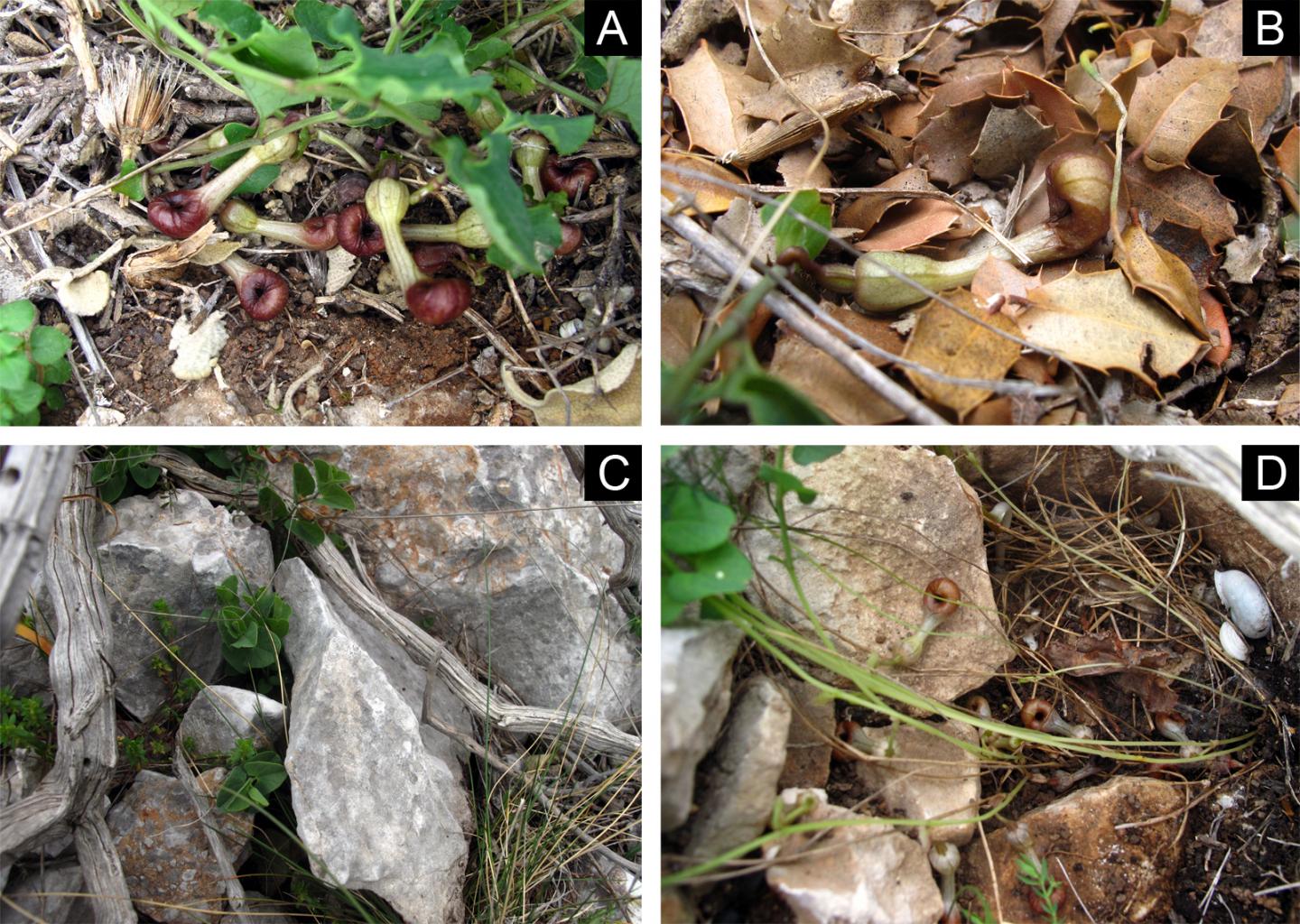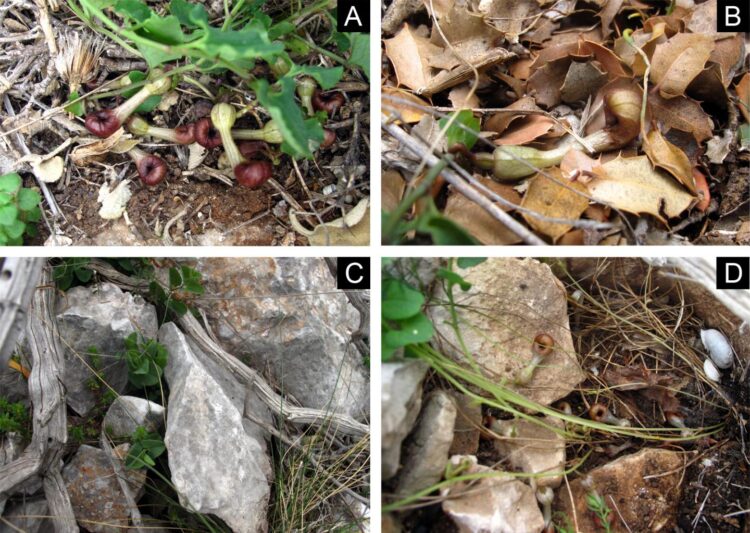First plant found to deceive pollinators by mimicking decomposing insects

Credit: Credit: T. Rupp, B. Oelschlägel, K. Rabitsch et al.
The plant Aristolochia microstoma uses a unique trick: its flowers emit a fetid-musty scent that seems to mimic the smell of decomposing insects. Flies from the genus Megaselia (family Phoridae) likely get attracted to this smell while searching for insect corpses to mate over and lay their eggs in. When they enter a flower, they are imprisoned and first pollinate the female organs, before being covered with pollen by the male organs. The flower then releases them unharmed.
“Here we show that the flowers of A. microstoma emit an unusual mix of volatiles that includes alkylpyrazines, which are otherwise rarely produced by flowering plants. Our results suggest that this is the first known case of a flower that tricks pollinators by smelling like dead and rotting insects rather than vertebrate carrion,” says corresponding author Prof Stefan Dötterl, the head of plant ecology group and the Botanical Gardens at the Paris-Lodron University of Salzburg, Austria. The study is published in the open access journal Frontiers in Ecology and Evolution.
Between 4-6% of flowering plants use a ‘deceptive pollination strategy’: they use odor, color, and touch to advertize a reward to pollinators, such as nectar, pollen, or mating and breeding sites, but don’t actually give any. The deception works because pollinators are poor at distinguishing between the reward and the mimic. Deceptive pollination is typical of many orchids, but has also independently evolved in other plants, including in the genus Aristolochia (family Aristolochiaceae or birthworths).
“Aristolochia contains over 550 species around the world, especially in the tropics and subtropics. They are mostly woody vines and herbaceous perennials with striking, complex flowers that temporarily imprison their visitors to get pollinated,” says Prof Christoph Neinhuis, coauthor of the study, who cultivates one of the largest Aristolochia collections worldwide at TU Dresden Botanical Garden, Germany.
When pollinators enter an Aristolochia flower, they are guided by hairs downwards to a small chamber which holds the sexual organs. Trapped inside, they deposit any pollen they carry onto the female organs, before the stamens ripen and release more pollen. When the hairs that block the entrance to the chamber wither, the pollinators can escape, and a new cycle can begin.
“Many Aristolochia species are known to attract flies with floral scents, for example mimicking the smell of carrion or feces of mammals, decaying plants, or fungi,” says first author Thomas Rupp, a PhD student at the Paris-Lodron University of Salzburg. “But our curiosity was piqued by A. microstoma, a species known only from Greece: unlike other Aristolochia with their showy flowers, A. microstoma has inconspicuous brownish flowers that lie horizontally, partly buried or close to the ground among leaf litter or rocks. The flowers release an unpleasant, carrion-like smell, noticeable to people at a short distance.”
Rupp and colleagues sampled A. microstoma plants from three sites in Greece: one West of Athens and two on the Peloponnese. From 1457 flowers (of which 72% were in the first, female phase) they collected a total of 248 arthropods, ranging from flies from four families to centipedes and springtails. Only female and male Megaselia flies – M. scalaris and members of the M. angusta/longicostalis cluster of closely related species, as determined through DNA barcoding and from morphology – were found carrying pollen inside its flowers, indicating that they are the normal pollinators.
The authors then used gas chromatography with mass spectrometry (GC/MS) to analyze the flowers’ scent ‘bouquet’. They found 16 compounds, including strong-smelling nitrogen- and sulfur-bearing volatile molecules. Among the main ‘ingredients’ were oligosulfides, produced by many plant species whose pollinators are carrion flies or bats: a fetid scent characteristic of decomposing meat. But surprisingly, another was 2,5-dimethylpyrazine (8-47% of total composition), a musty scent typical of cooked rice or roasted peanuts – known in nature to occur in the carapace of decomposing beetles and well as in the urine of rodents. Very few plants are known to produce this compound, strongly suggesting that A. microstoma mimics an unusual fake ‘reward’ to attract specialist pollinators.
“Earlier studies had suggested that A. microstoma might be pollinated by leaf litter-dwelling insects such as ants, because of the orientation and position of the flowers. But here we show that this isn’t correct: instead, the main pollinators are Megaselia ‘coffin flies’. As their name suggests, these flies feed on carrion, on which they lay their eggs and which serves as food for the larvae, which is why they are often used as evidence in forensic medicine,” says Dötterl.
“We show A. microstoma flowers emit a simple but highly unusual mix of scents that includes 2,5-dimethylpyrazine, a molecule that occurs neither in vertebrate carcasses nor in feces, but does occur in dead beetles. We conclude that A. microstoma likely uses a strategy that has never been reported before: its flowers mimic the smell of invertebrate carrion to attract and imprison pollinators. The peculiar orientation of the flowers close to the ground may also help, as pollinating coffin flies search for breeding sites or food close to the ground, in leaf litter or between rocks,” concludes coauthor Prof Stefan Wanke from TU Dresden, Germany.
###
Media Contact
Mischa Dijkstra
[email protected]
Related Journal Article
http://dx.





